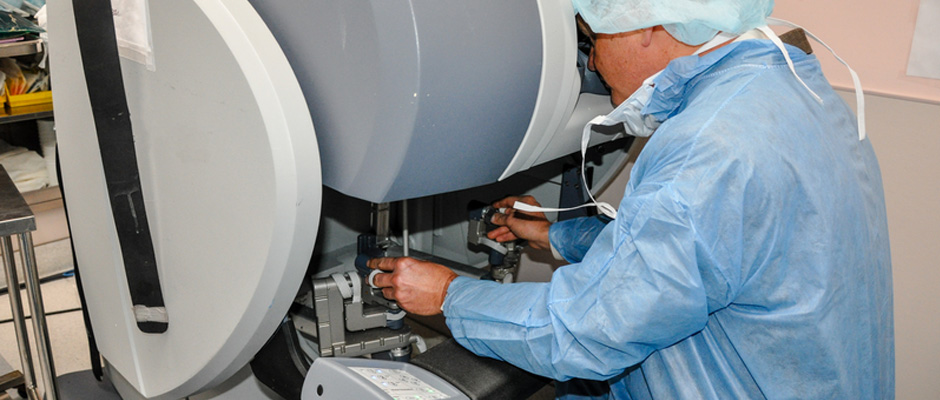Robotic Assisted Laparoscopy Not Better Than Standard Laparoscopy
Jun 22, 2017
Literature review suggests that the procedure should only be used within controlled studies for the treatment of endometriosis.
Key Points
Highlight:
- Robotic-assisted laparoscopy does not seem to provide significant benefits over standard laparoscopy for the treatment of endometriosis.
Importance:
- Robotic-assisted laparoscopy is very expensive and more research is needed to investigate the role of RAL for the treatment of endometriosis.
What’s done here:
- A literature review between January 2000 and December 2016 on research articles about the use of RAL.
- Among a total of 178 research articles, 17 included in the present study based on the number of women that were analyzed and the presence of original data.
- Out of 17 studies, 11 were about RAL only and included a total of 445 women, while only six compared RAL with standard laparoscopy, and contained data about 749 women who underwent RAL, and 705 women who underwent standard laparoscopy.
Key results:
- There are very few studies directly comparing RAL with standard laparoscopy.
- No data is available on the effects of RAL on long-term pain relief or pregnancy rates.
- Data analysis from the 6 studies comparing RAL with standard laparoscopy revealed that
- RAL treatment of endometriosis does not seem to provide benefits over standard laparoscopy.
- The conclusion was the same when they analyzed subgroups of women with severe endometriosis, peritoneal endometriosis, and obese women.
Limitations:
The overall quality of the studies included in this literature review is very low and adequately designed randomized clinical trials could demonstrate a more robust benefit of RAL.
Lay Summary
Robotic-assisted laparoscopy (RAL) does not seem to offer any benefits over standard laparoscopy, according to a study published in the scientific journal Reproductive Biomedicine Online.
According to the authors of the study more research is needed to investigate the role of RAL for the treatment of endometriosis.
“Due to the higher costs, RAL treatment of endometriosis should be performed only within controlled studies,” the researchers wrote.
In order to clarify whether RAL, which became available in recent years, offers an advantage over standard laparoscopy for the treatment of women with endometriosis, a team of researchers led by Dr. Paolo Vercellini at the University of Milan in Italy reviewed the literature for research articles published about the use of RAL between January 2000 and December 2016.
They identified a total of 178 research articles, 17 of which they included in the present study based on the number of women that were analyzed and the presence of original data. Of those 17 studies, 11 were about RAL only and included a total of 445 women, while six compared RAL with standard laparoscopy and contained data about 749 women who underwent RAL, and 705 women who underwent standard laparoscopy.
Following the analysis of the findings of the first 11 studies, the researchers found that for women who underwent RAL, the mean operation time was 226 minutes (3.76 hours). These women lost 168 mL of blood and stayed in the hospital for four days on average. A major complication following the operation occurred in 3.1 percent of women. Eight of the studies reported an improvement in pain 15 months following surgery among the women.
When they analyzed the data from the six studies comparing RAL with standard laparoscopy, the researchers found that five of the studies reported a longer time of surgery for RAL compared to standard laparoscopy. Major complications following surgery occurred in 1.5 percent of women who underwent RAL compared to just 0.3 percent of women who underwent standard laparoscopy. Only one study reported pain reduction for RAL six months after surgery.
The authors concluded that RAL treatment of endometriosis does not provide benefits over standard laparoscopy. The authors came to the same conclusion when they analyzed subgroups of women with severe endometriosis, peritoneal endometriosis (a particular form of the disease that is strongly associated with pelvic pain), and obese women.
“Available evidence is low-quality, and data regarding long-term pain relief and pregnancy rates are lacking,” the researchers wrote and concluded that RAL treatment of endometriosis should only be performed within controlled studies.
Research Source: https://www.ncbi.nlm.nih.gov/pubmed/28624343
laparoscopy surgery robotic assisted laparoscopy literature review hormonal-or-surgical

